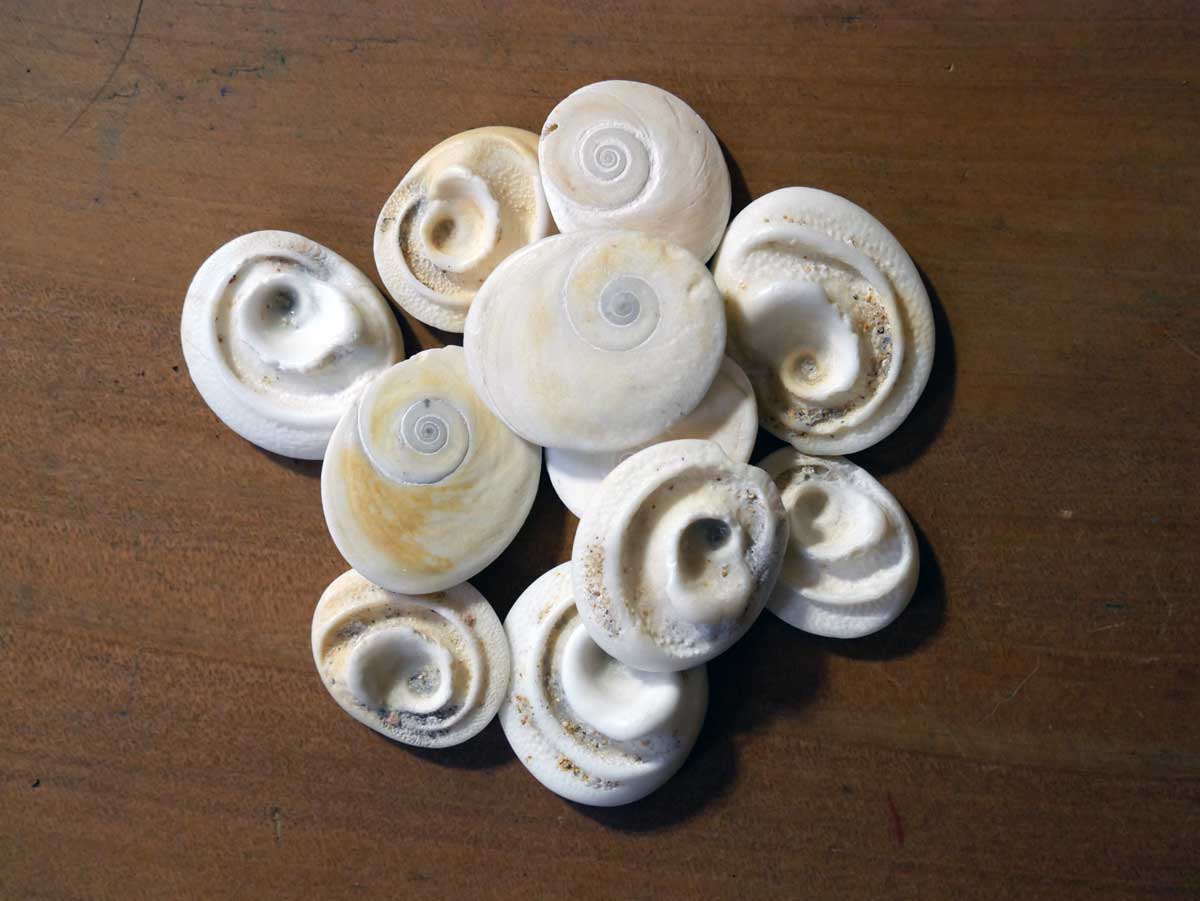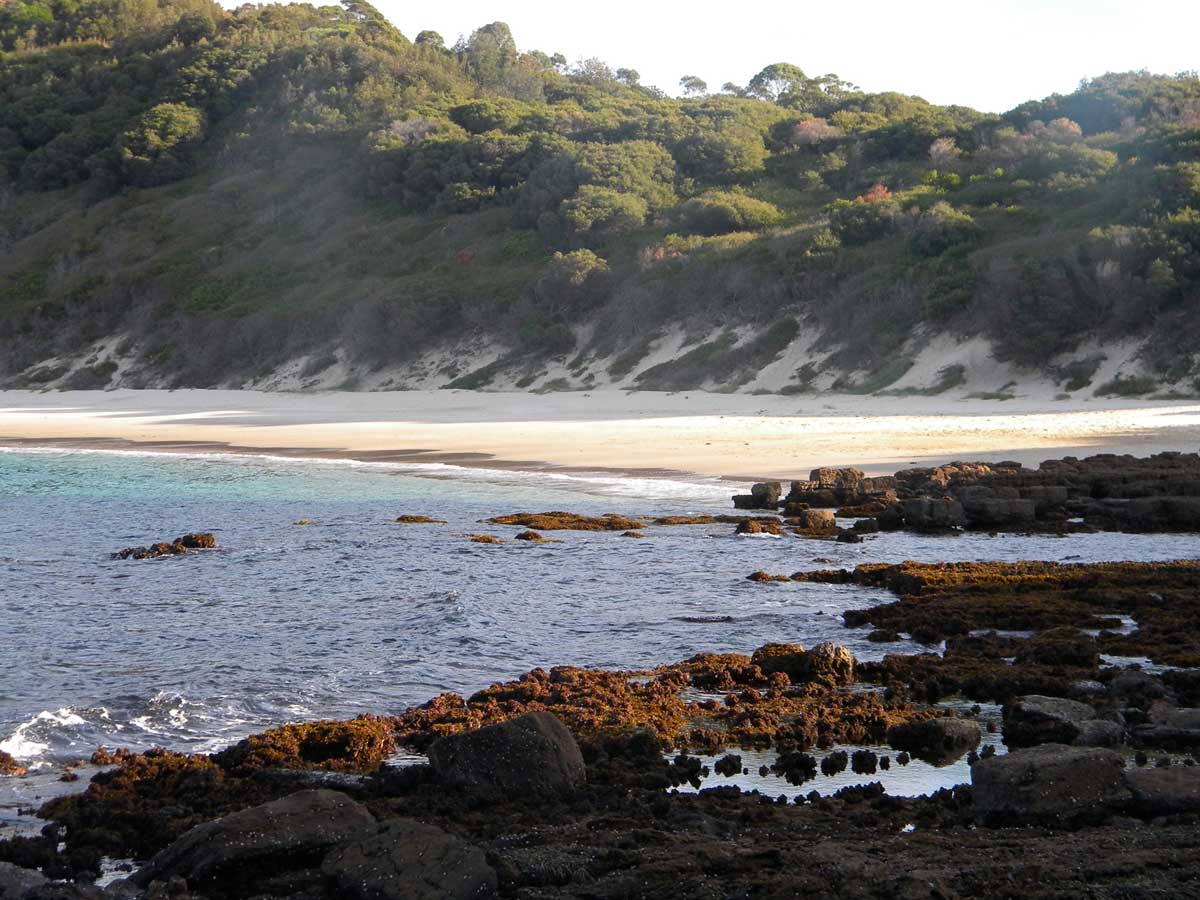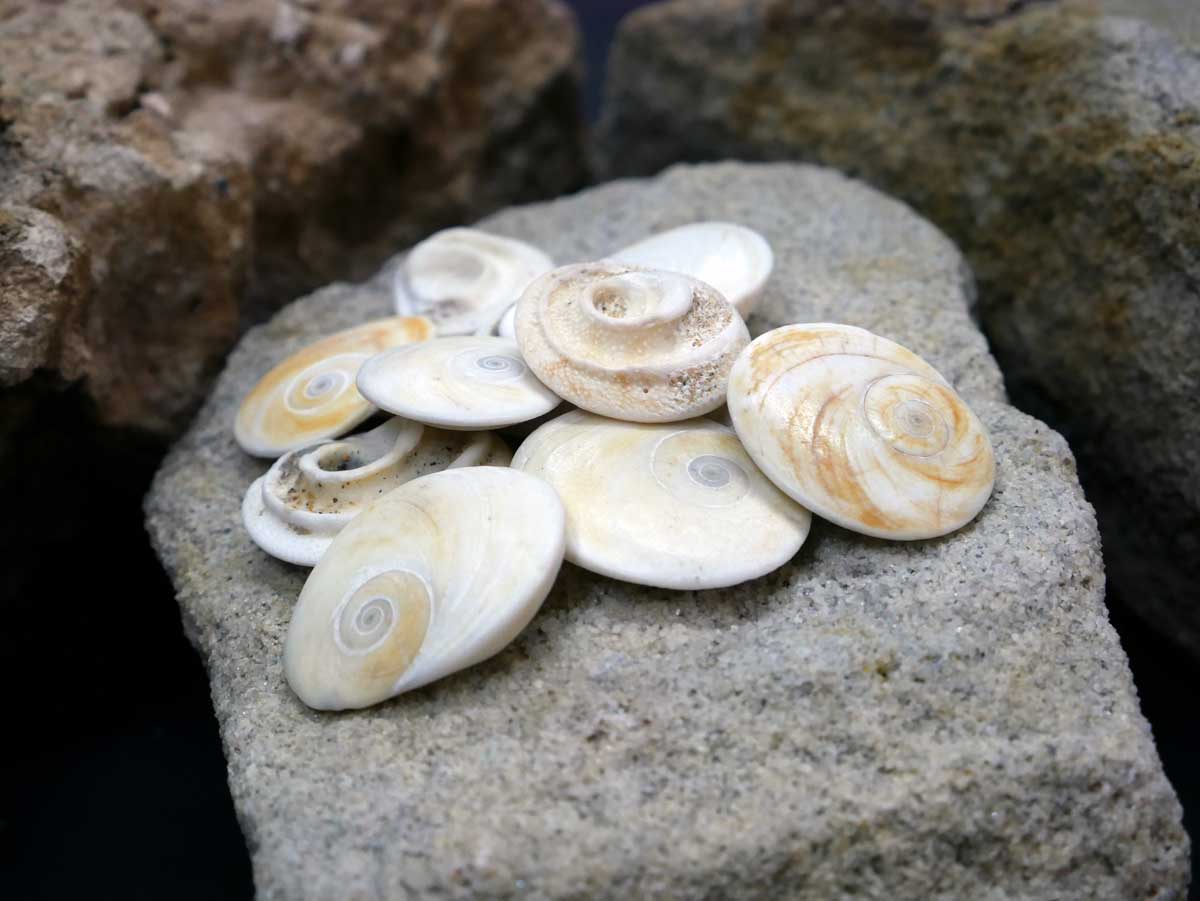Opercula
Opercula
I was born in India, but 2 years later my family were in Australia, part of the flotsam and jetsam of Empire washed up in a country no-one knew anything about. For the last 30 years I have lived close to saltwater Country on the Illawarra coast of New South Wales, where I can daily and nightly walk the tideline. At my favourite and secret local beach I watch the energy dissipate from waves born in ocean storms hundreds of kilometres away, and those waves, like Empire, wash all kinds of things ashore.
Beneath the bright seaworn plastic and the bodies of exhausted shearwaters, small spiral-engraved discs shine amongst the sand and seaweed. My children call them mermaid money. These are opercula, little doors, the calcium carbonate lids that marine snails make to close off their shell homes. Opercula accumulate singly or in drifts as currents and waves bring them from the ocean to the tide zone. When part of the living animal, their owners etch their daily pathways in braille across the sand of ocean floors, their lives crossing and recrossing in minute encounters. Once those animals die, the soft parts of their bodies become food for carnivores and detrivores, and their hard shell parts strew across rocky substrate and sand, to be re-used and moved and recycled.

Photo: Elyse Stanes
Opercula are persistent, the hard calcium carbonate material sometimes taking many hundreds or even thousands of years to disintegrate. They are often found in Aboriginal shell middens, signs of shoreline ceremonial feasts or humble family meals. Middens in my region are most likely between 3,000 to 8,000 years old, in part reflecting the time the coastline stabilised to its current position around 8,000 years ago as the seas rose at the end of the last ice age. Saltwater Aboriginal people lived through that long period of drowning coastlines, adapting and responding to momentous changes and opportunities as the sea moved landward at rates of 20 metres annually.
One of the joys and privileges of living on saltwater Country has been spending time learning with local Aboriginal people and others who can trace multiple generations here. The deep time perspectives, the layers of more recent history traced on land and seascapes, the continuity of wild food gathering, the glimpses into a deeply storied landscape, all enrich and redefine my understandings of these coasts and waters. I also gather food here, spearfishing and diving for abalone, crayfish and urchins, and gathering edible seaweeds and native spinach on rock platforms and dunes. I have learned from Aboriginal and non-Aboriginal locals about habitats, seasons, relationships, changes of all kinds and their opportunities and limitations in supporting life. This knowledge is not taught formally or abstractly, it is experiential, learned through using our hands and bodies and eyes, sharing labour across generations, walking and swimming and diving in this place.

Photo: Michael Adams
I routinely beachcomb these shores, examining and sometimes keeping everything from rusty metal ship parts to shark egg cases to opercula. Most of the opercula I find are from the marine turban snail, commonly called conks by Aboriginal people, and turbos or turbans by others. I have small collections of those spiralled discs on my bookshelves. They are found art, each individual operculum unique and beautiful. One smooth side has a pure and sinuous spiral, its precise geometry and form reflecting the unique conditions of its life and times; and the other more convoluted side marked by the anatomy of the gastropod muscle itself in all its diversity. Shells are the earliest jewellery, the most ancient currency, used in the first known examples of abstract art – all expressions of the relationship between our humanity and our animality.

Photo: Elyse Stanes
Looking offshore, a limitless ocean reaches to the edge of visibility: vast, mobile, constant. Unknowable. The surging tidal edge where I stand is a microcosm and macrocosm of change: second by second, tide by tide, aeon by aeon, the deep constant matrix of evolutionary life momentarily expresses each unique and fleeting life amongst the great cycles of flux. Our simultaneously huge and puny human impacts are gathered and archived and neutralised by vast planetary forces far outside our knowledge. The small spiralled discs of opercula shining in my palm hold the stories of both persistence and change, of finding the appropriate ways to live on these shores.
Michael Adams is Associate Professor in Human Geography at the University of Wollongong and a lecturer at Nan Tien Institute. He won the 2017 Calibre Prize for his essay ‘Salt Blood‘.

